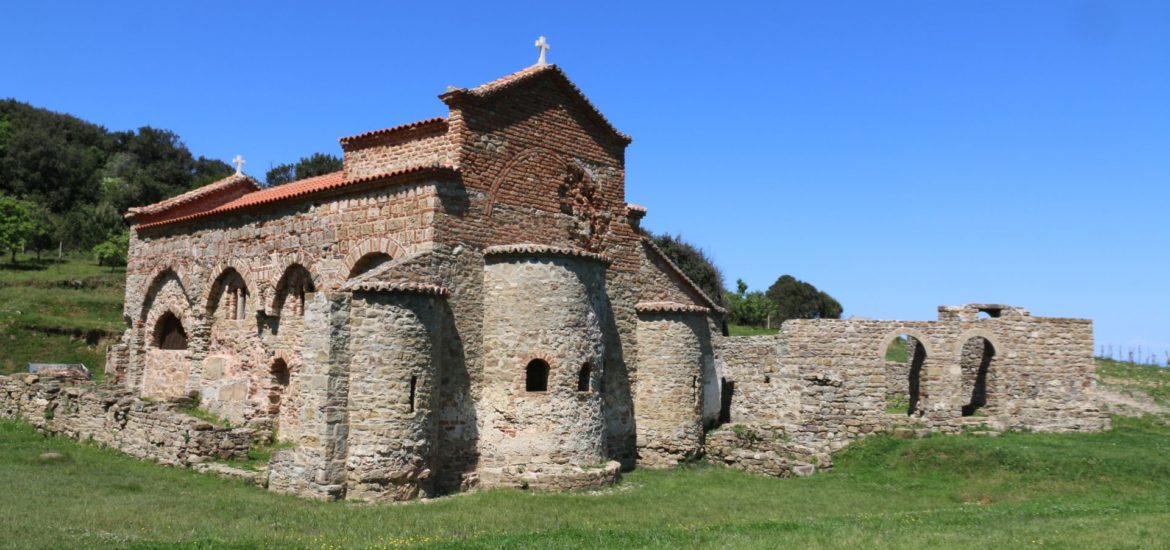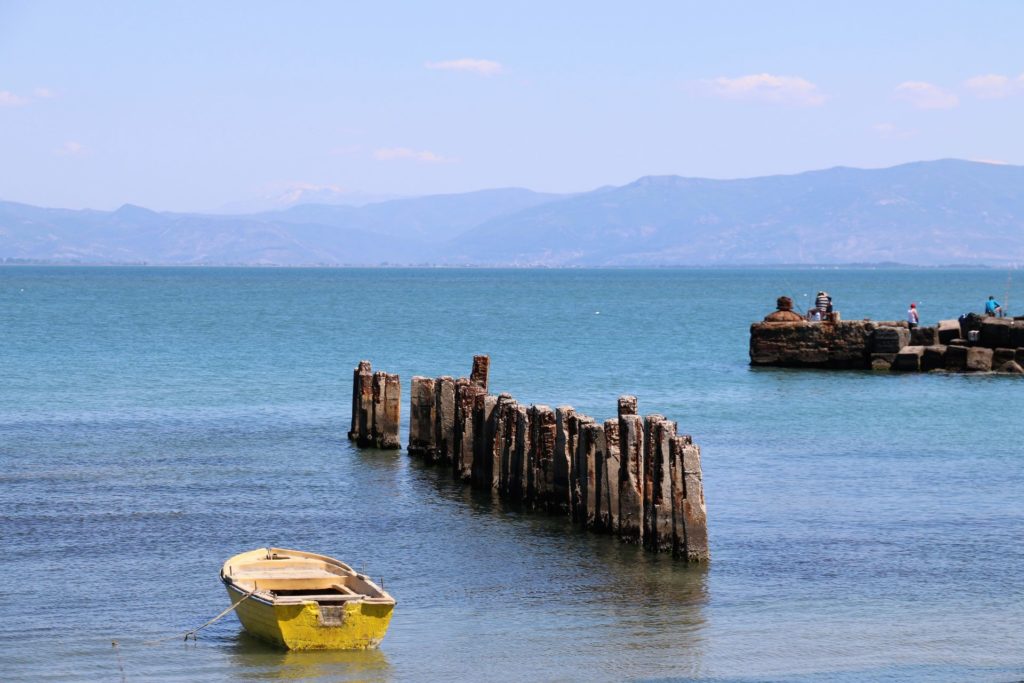Albania is getting more and more popular as a tourist country, but there are still plenty of undiscovered places. One of them is the Cape of Rodon (in Albanian: Kepi i Rodonit), a rocky, 10 km long cape on the Adriatic Sea, north of Durres.
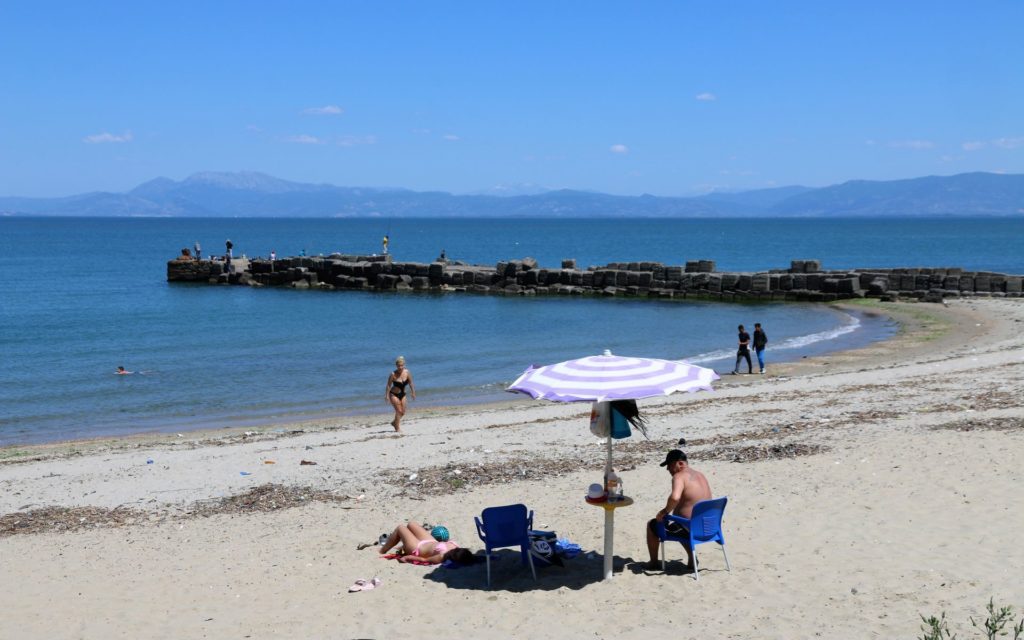 We visited the cape last year in May and I can assure you: it is an awesome place! This narrow strip of land, in the shape of a peninsula, extends along the Adriatic Sea and offers a mix of untouched nature, magnificent views, medieval cultural monuments, virgin sandy beaches and plenty of old bunkers from Enver Hoxha’s times.
We visited the cape last year in May and I can assure you: it is an awesome place! This narrow strip of land, in the shape of a peninsula, extends along the Adriatic Sea and offers a mix of untouched nature, magnificent views, medieval cultural monuments, virgin sandy beaches and plenty of old bunkers from Enver Hoxha’s times.
How to get there?
Driving along the main road from Durres to Tirana (SH2), turn right at Maminas – and then left before the viaduct – and follow the new asphalt road until the end of the Cape of Rodon (35 km). The road runs along small villages and new villas through a beautiful hilly landscape covered with holm oak forests. It is lucky that the land around the cape is owned by the church, so that the forests have been spared from the axe. At the end of the road, you arrive at a vast meadow that stretches until the sea. Park your car near the church of St. Anthony.
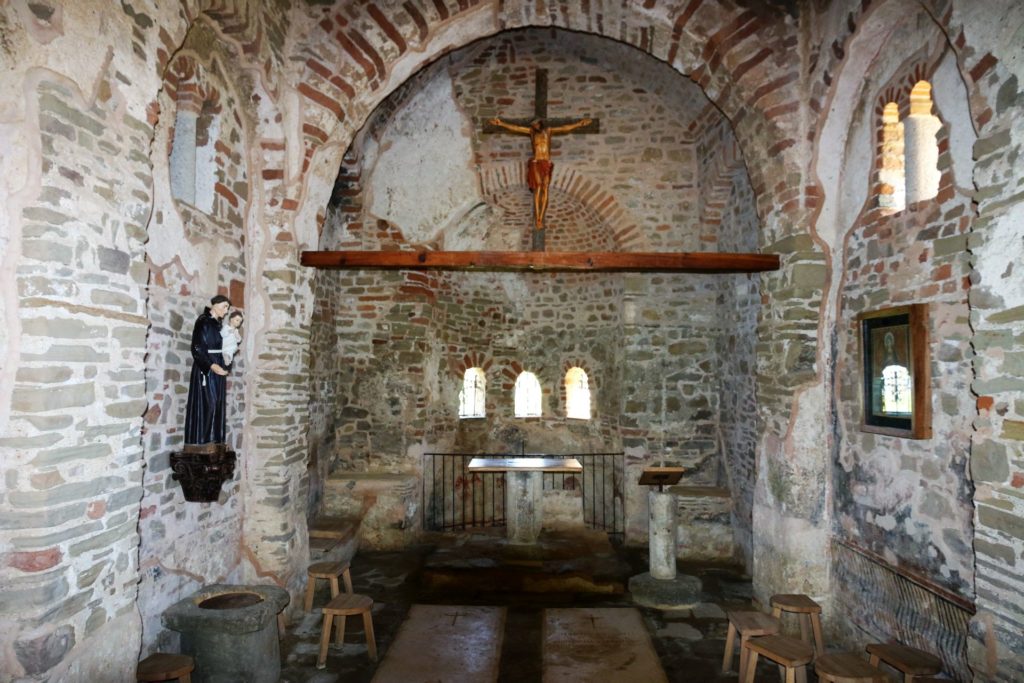 The Cape of Rodon can also easily be reached from Tirana, as the journey takes only one and a half hour.
The Cape of Rodon can also easily be reached from Tirana, as the journey takes only one and a half hour.
The legend
According to legend, the name of the Cape is linked with Redon, the official God of the Illyrian state, whose portrait was immortalized by paintings in temples and as a symbol on the coins that were used by the Illyrians in those times.
What is there to see?
Church of St Anthony
At the end of the road, you will see the Church of St Anthony, originally built in the 12th century, but rebuilt in the 15th century, in Romanesque-Gothic style, as part of a Franciscan monastery. In Enver Hoxha’s times, it was used as a military depot, but recently it was restored with financial support of the European Union. The interior is quite simple; it includes several old frescoes, among which a two-headed eagle and a female rider, probably the sister of Albania’s national hero Skanderbeg, Mamica, who founded the monastery. The church is open for service and every year locals and tourists join here for festivities and pilgrimage on June 13th, St Anthony’s Day.
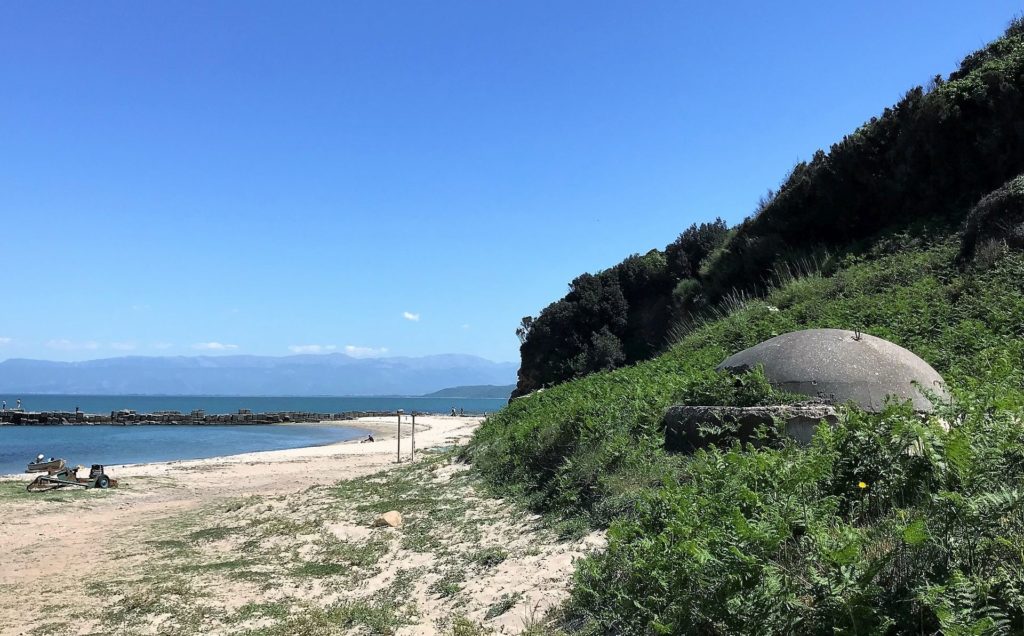 Access to the complete area was strictly prohibited during communist times, as the cape was an important military base on the coast. Numerous bunkers and tunnels were left as monumental souvenirs reminding visitors of the Enver Hoxha regime. The sandy beach is nearby and you can take a stroll along the water or a jump right into the sea. Near the church are a few beach shack “restaurants” with grills. Don’t be surprised when you see that they use the old bunkers and tunnels as storage rooms!
Access to the complete area was strictly prohibited during communist times, as the cape was an important military base on the coast. Numerous bunkers and tunnels were left as monumental souvenirs reminding visitors of the Enver Hoxha regime. The sandy beach is nearby and you can take a stroll along the water or a jump right into the sea. Near the church are a few beach shack “restaurants” with grills. Don’t be surprised when you see that they use the old bunkers and tunnels as storage rooms!
Walking trail
If you like walking, you can explore the Rodoni Castle and continue to the end of the cape.
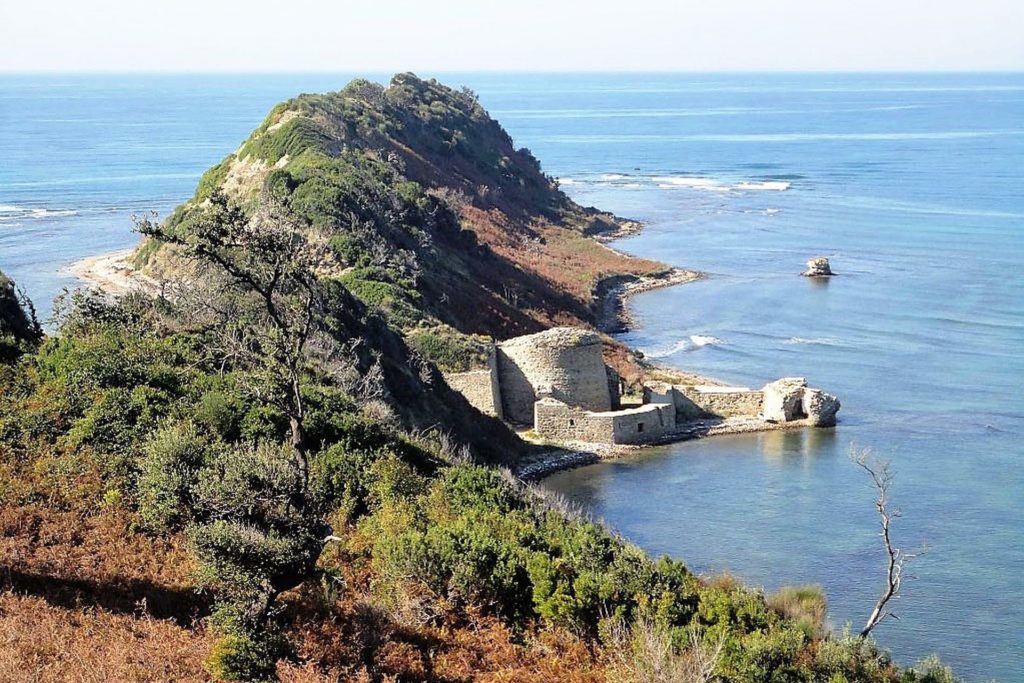 Follow the track back inland past bunkers (turn left uphill before the church, beside a few dilapidated houses). After 10 minutes you will reach several big bunkers, hidden within the rocky slopes. From here starts a narrow trail to the tip of the cape (40 minutes). You will see the castle on your right side down, on the beach, so you have to climb down to reach it.
Follow the track back inland past bunkers (turn left uphill before the church, beside a few dilapidated houses). After 10 minutes you will reach several big bunkers, hidden within the rocky slopes. From here starts a narrow trail to the tip of the cape (40 minutes). You will see the castle on your right side down, on the beach, so you have to climb down to reach it.
After wandering around the castle, you can walk back to the path and continue to the end. This is an amazing hike through evergreen forests with magnificent views on both sides. But take care: this walk requires a sure foot and no fear of heights! Make sure to wear long trousers – because of the thorny bushes – and comfortable shoes, as the path is narrow, steep, rocky and sometimes slippery…
Rodoni (Skanderbeg) Castle
 The above mentioned Rodoni Castle is also called Skanderberg Castle, by Albania’s famous nobleman and military commander Skanderbeg, who built it. Completed around 1452, this castle by the sea was meant to create a quick exit to the Adriatic Sea in case of an Ottoman invasion. Alas, the fortification didn’t last very long: it was destroyed by the Ottomans in 1467. The Venetians rebuilt it after 1500.
The above mentioned Rodoni Castle is also called Skanderberg Castle, by Albania’s famous nobleman and military commander Skanderbeg, who built it. Completed around 1452, this castle by the sea was meant to create a quick exit to the Adriatic Sea in case of an Ottoman invasion. Alas, the fortification didn’t last very long: it was destroyed by the Ottomans in 1467. The Venetians rebuilt it after 1500.
You can climb around the castle’s outer walls that overlook the sea. Although the structures have crumbled, it is not hard to understand the strategic importance of a castle at this place.
Development of the Cape of Rodon
 Tourism in this area has been developing slowly in the past years, but the cape is getting more and more attention as a potential tourist destination. No wonder, the coastline is full of small bays and coves among the rocks, and divers have discovered a new underwater world around the cape. So far, a group of young people has established “Atlantid Beach”- a modest beach bar and a number of small private tents, but there is also a new campsite on the peninsula, and you can hire a room in one of the new villas.
Tourism in this area has been developing slowly in the past years, but the cape is getting more and more attention as a potential tourist destination. No wonder, the coastline is full of small bays and coves among the rocks, and divers have discovered a new underwater world around the cape. So far, a group of young people has established “Atlantid Beach”- a modest beach bar and a number of small private tents, but there is also a new campsite on the peninsula, and you can hire a room in one of the new villas.
You will not be surprised when I say that I prefer these hidden places as long as they are pure, wild and untouched. But I know that the Cape of Rodon is attractive enough to change with time and become a popular tourist destination…
